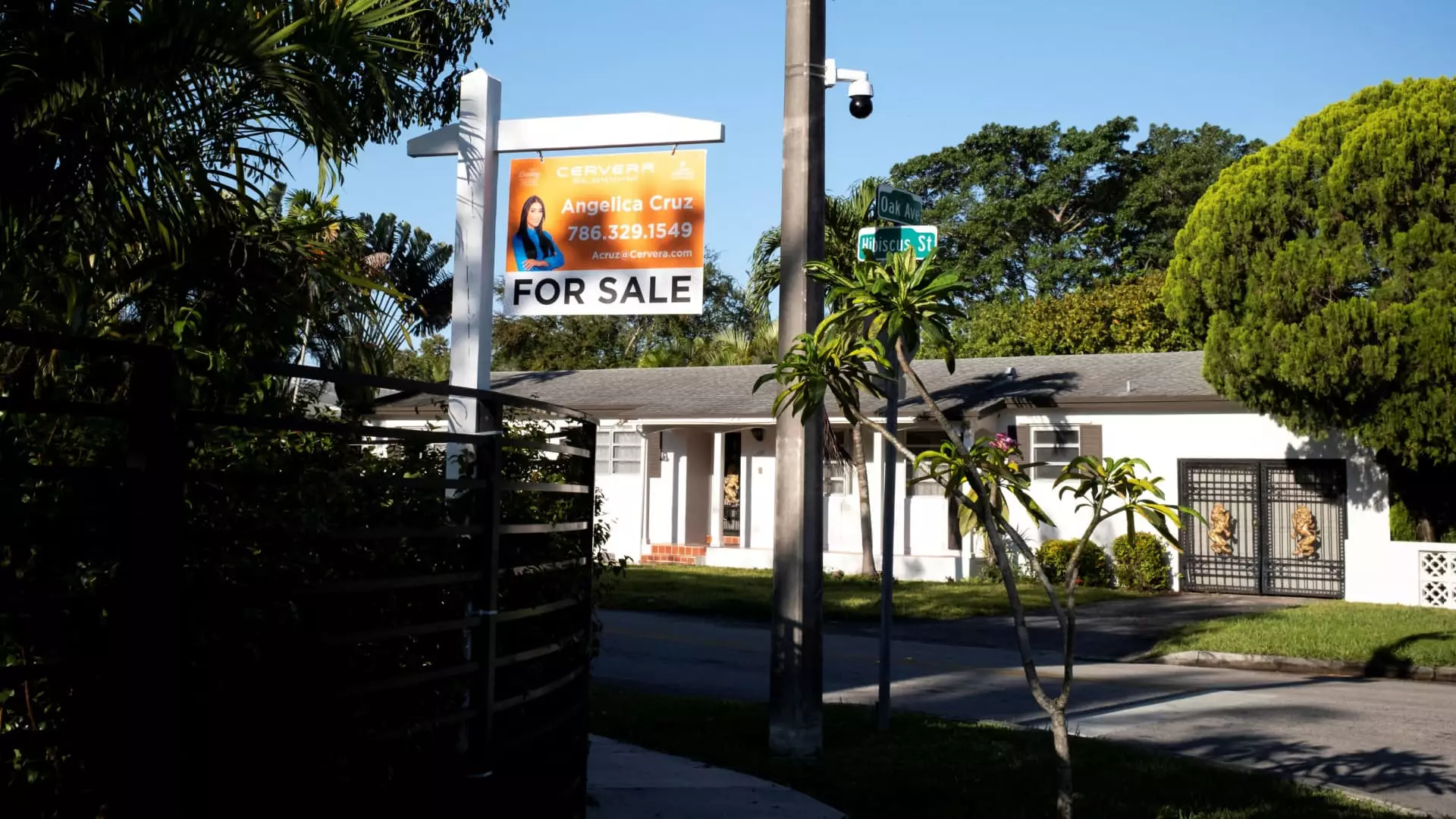This spring, the housing market is awakening not with optimism, but rather a stark realization that many Americans are still grappling with financial uncertainty. For the average homebuyer, soaring mortgage rates present a formidable barrier, tightening the noose of affordability. Recent data from the National Association of Realtors (NAR) paints a distressing picture: home sales plummeting by 5.9% in March compared to February, culminating in the lowest recorded sales figures for this month since 2009. Shockingly, we see year-over-year sales down by 2.4%, raising alarms across the board.
What is particularly chilling is the significant downturn in the sales of previously owned homes across all regions, with the West experiencing the hardest hit at a staggering 9% decline. This isn’t merely a statistical anomaly; it signals a larger trend driven by broader economic factors and, crucially, an unwillingness—or an inability—of potential buyers to participate in a market that feels increasingly out of reach. It’s concerning how many are feeling stuck, marking a broader societal issue where residential mobility is at a historic low.
Listings Surge, Activity Plummets
Amidst this downturn, one would assume that an increase in available listings—approximately 1.33 million homes for sale as of March—could help reignite interest in the market. Surprisingly, this influx hasn’t translated into sales success. Instead, the current pace points to a four-month supply of homes, a clear deviation from the norm that indicates a tilt towards a buyer’s market. Yet, the standard benchmark for balance sits at six months. It’s mind-boggling that even as inventory climbs—up nearly 20% from the previous March—sales stagnate.
What’s worse, home prices are not following the expected pattern of rising buoyantly alongside increasing listings. The median price of an existing home reached $403,700, still an all-time high for March, yet this figure is creeping up at a diminishing annual rate of just 2.7%. This hints at a softening market, where homeowners may need to reconsider their expectations for favorable selling conditions, shifting the dynamics that once favored sellers over buyers.
Contradictions in Wealth and Reality
In an ironic twist, Lawrence Yun, NAR’s chief economist, remarked, “In a stark contrast to the stock and bond markets, household wealth in residential real estate continues to reach new heights.” Yet, one can’t help but wonder, whose wealth is truly benefiting from this circumstance? As real estate valuations touch unprecedented levels—raising family balance sheets by more than $500 billion for each percentage point increase in home prices—many families remain sidelined. This widening wealth gap underscores the distress many face, as the majority grapple with the harsh realities of stagnant wages against soaring costs.
First-time buyers, typically a cornerstone of any thriving real estate market, formed merely 32% of the market in March—far short of the historical norm of around 40%. What happened to this demographic that often breathes life into housing opportunities? Put simply, they are being priced out. Meanwhile, all-cash buyers vary little—at 26% of transactions—indicating that investors are seizing opportunities while genuine aspirants are left frustrated and discouraged.
Foreboding Trends Ahead
As economic instability lingers, a troubling trend of canceled contracts is emerging, hinting at the pessimism coursing through potential buyers. Across the board, public sentiment remains clouded due to stock market fluctuations and broader economic indicators. Robert Frick, a corporate economist with Navy Federal Credit Union, succinctly conveyed a grim foresight: “March numbers are bad, but they’re likely to get worse.”
This statement resonates with a disconcerting truth; without a swift resolution to rising interest rates and job market stability, the impending months could witness a deeper slump. Indications point to a yawning gap between the wealth in real estate and the lived experience of the average American, exposing a fragility in this fundamental market. As the housing crisis persists, the once vibrant spring housing market seems poised for a harsh, protracted winter ahead.

